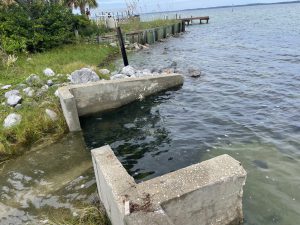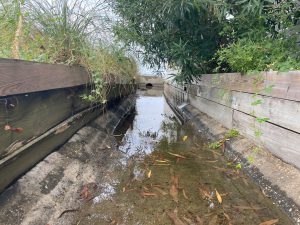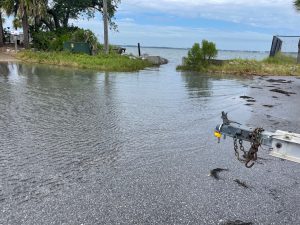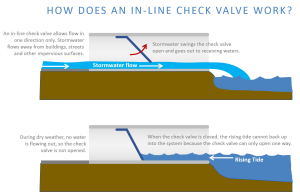
Watching news reports showing the aftermath of Hurricane Idalia, most of us can relate to the nerve-wracking feeling of waiting for a storm to arrive. While no one wants to be in the direct path of a hurricane, it’s often a relief to have it over with so we can start moving forward, getting life back to normal. While flooding from hurricane-related rainfall and storm surge is sudden and intense, it is, mercifully, temporary.

Unfortunately, all over the state of Florida and in many coastal communities worldwide, a newer type of flooding is becoming a daily issue. Due to sea level rise, high-tide flooding (aka “nuisance” or “sunny day” flooding) is a frequent part of the landscape. This type of flooding occurs in low-lying areas that once had plenty of clearance between water levels and nearby streets and residences.

But now with measurable sea level rise added to the high tide, the nearest bay or bayou overtops seawalls, floods over marshes into uplands, or backs up into stormwater drains, flooding the streets on days with no rain at all. During a tropical storm or heavy rain, stormwater drains fill up in both directions and can no longer empty, pushing even more water into the roadways. This causes dangerous conditions for driving and expensive damage to property.

Trying to fix these problems is extremely expensive, often prohibitively so. In many situations, property owners and cities will just endure it until they simply abandon the location because conditions are no longer livable or insurable.
Potential solutions to this type of flooding include raising street levels or installing pumps, in-line or “duckbill” check valves that prevent backup into stormwater pipes, levees, or dams. Investing in this type of infrastructure is often a case-by-case scenario, where local governments must determine whether the cost is worth the long-term benefit. In addition, the more investment made in this “drowning” infrastructure could lead to increased liability for cities and counties if the improvements are no longer working.
Green stormwater infrastructure like pervious pavement, bioretention, and living shorelines can also alleviate some of the pressure from high tide flooding, if communities are willing to invest in them.
 5
5
